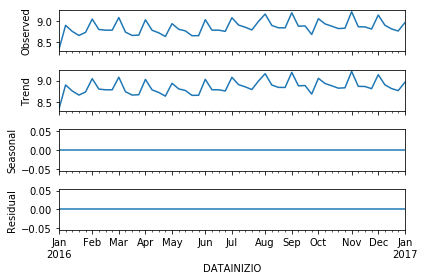I know there are many questions on this topic, but none of them helped me to solve this problem. I'm really stuck on this.
With a simple series:
0
2016-01-31 266
2016-02-29 235
2016-03-31 347
2016-04-30 514
2016-05-31 374
2016-06-30 250
2016-07-31 441
2016-08-31 422
2016-09-30 323
2016-10-31 168
2016-11-30 496
2016-12-31 303
import statsmodels.api as sm
logdf = np.log(df[0])
decompose = sm.tsa.seasonal_decompose(logdf,freq=12, model='additive')
decomplot = decompose.plot()
i keep getting: ValueError: operands could not be broadcast together with shapes (12,) (14,)
I've tried pretty much everything, passing only logdf.values, passing a non-log series. It doesn't work. Numpy and statsmodel versions:
print(statsmodels.__version__)
print(pd.__version__)
print(np.__version__)
0.6.1
0.18.1
1.11.3

